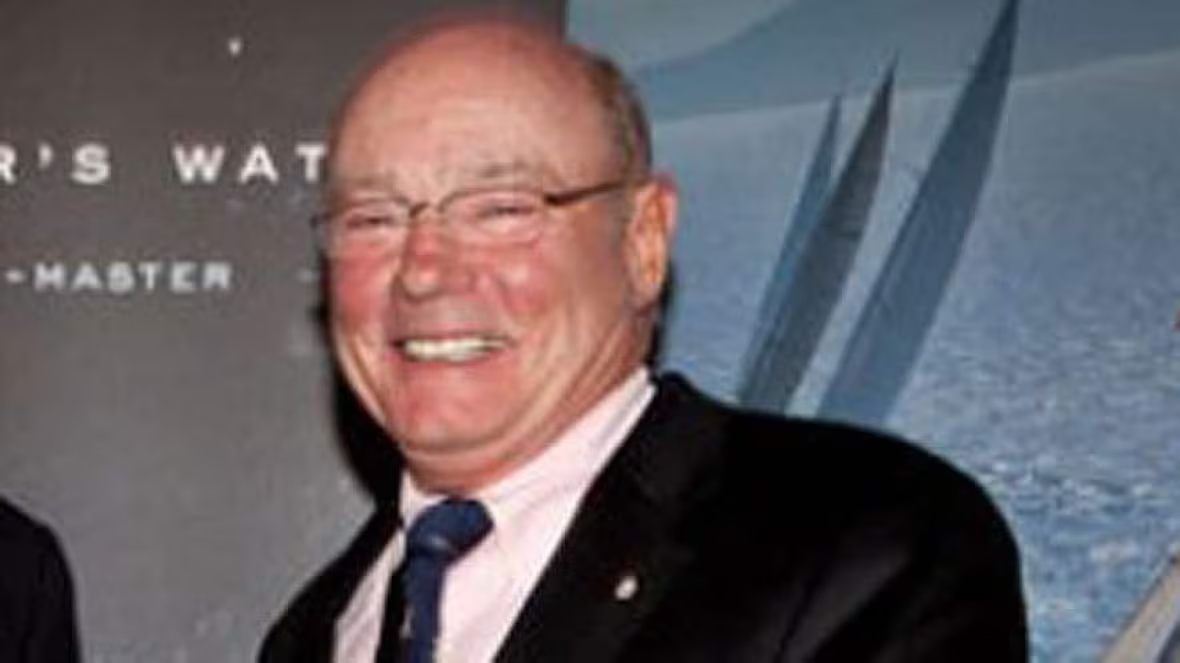Weapon used to kill Richard Oland undetermined, murder trial hears
WARNING: This story contains graphic material that some readers may find disturbing

The pathologist who performed the autopsy on Richard Oland's body could not determine what weapon — or weapons — were used to kill him.
Dr. Ather Naseemuddin testified Thursday at Dennis Oland's second-degree murder trial in Saint John that the injuries were inflicted by two separate surfaces.
Whether they were both on the same weapon, however, he could not say.
Richard Oland suffered 40 sharp and blunt force injuries to his head, and six defensive wounds to his hands.
The prominent businessman's bludgeoned body was discovered lying face down in a large pool of blood in his investment firm office on Canterbury Street on July 7, 2011.
Dennis Oland, 47, who is the last known person to see his father alive during a meeting the office the night before, has pleaded not guilty in his death.
No weapon was ever found.

He said he had to wait several hours for the officers to finish searching Oland's body for evidence before he could begin his work, carefully examining and documenting each wound.
He methodically disclosed his findings to the jury, showing close up photographs of each wound and providing their measurements — length, width and depth.
Justice John Walsh had warned people in the courtroom about the graphic photographs, saying some people may wish to leave, or avoid looking at the display monitors.
Naseemuddin testified that the six blunt force injuries to Oland's head were round and had a "faint cross hatching pattern in them," although his post-mortem report noted five such injuries.

Oland suffered "multiple displaced fractures of the skull bones with extension disruption of the brain tissue," Nassemudin noted in his 12-page post-mortem report.
"Death, in my opinion, resulted from multiple sharp and blunt force injuries to the head," he wrote.
Sgt. Mark Smith, the head of the Saint John Police Force's forensic identification unit, had previously testified that the blunt force wounds measured about three centimetres in diameter and appeared to have been caused by a hammer-type instrument.
He estimated the incised wounds were made by a sharp instrument about six or seven centimetres in length.
Naseemuddin's testimony continues on Friday at 9:30 a.m., when the trial resumes.
Accused's blood, DNA not found on victim
Earlier Thursday, the forensics officer told the jury that no blood or DNA identified as being Dennis Oland's was found on Richard Oland's body, or in the office where he was killed.
During cross-examination, defence lawyer Gary Miller asked Smith to confirm that he never received "any information whatsoever, reports or otherwise," that any blood or DNA identified as being Dennis Oland's was found on Richard Oland's body, or at the crime scene — the Far End Corporation office on the second floor of 52 Canterbury St.

Miller also asked Smith to confirm that had no information about the victim's blood or DNA being found on Dennis Oland's Volkswagen Golf City, the red Compliments reusable grocery bag he reportedly had with him the night he visited his father, the bag's contents, or a log book that was in the office that night, which Dennis was supposed to deliver to his mother.
"Correct," said Smith, who had previously described the murder scene as "one of the bloodiest" he had seen in his 27-year career, with "hundreds" of blood spatter stains radiating around Oland's body.
Similarly, Smith confirmed he had no information about any blood or DNA identified as being Richard Oland's being found in or on a list of items seized from Dennis Oland's home a week after his father's death, including shoes, pants, shirts, blue shorts, bathroom garbage can, and his cell phone.
Brown jacket not mentioned
Miller did not ask Smith about the brown sports jacket seized from Dennis Oland's bedroom closet, however.
The Crown has previously said the jacket, which still a dry cleaning tag attached, had four areas of blood on it that matched Richard Oland's DNA profile.
Dennis Oland had told police he was wearing a navy blazer when he went to visit his father on the night in question.
But Richard Oland's secretary, Maureen Adamson, has testified that he was wearing a brown jacket when he arrived, around 5:30 p.m.The accused was also captured on video surveillance earlier in the day wearing a brown jacket.
'Junior' lead investigator
Miller also continued to challenge Smith about the police investigation, including the fact that the office who was put in charge of the file when the lead investigator retired had only been with the major crime unit for about three months.
The court heard earlier that Const. Stephen Davidson had only been with the major crime unit for three days when Oland's body was found and then put in charge three months later.
He was not new to the force, however. He had been an officer for about 12 years at that point — eight of which were spent in uniform patrol and the other four in the RCMP's integrated proceeds of crime unit.
Still, Miller asked if Smith was "surprised" about Davidson being handed the file.
"Maybe somewhat," he replied.
Asked whether he had ever worked on any other homicides where the lead investigator was so junior, Smith said he didn't believe so.